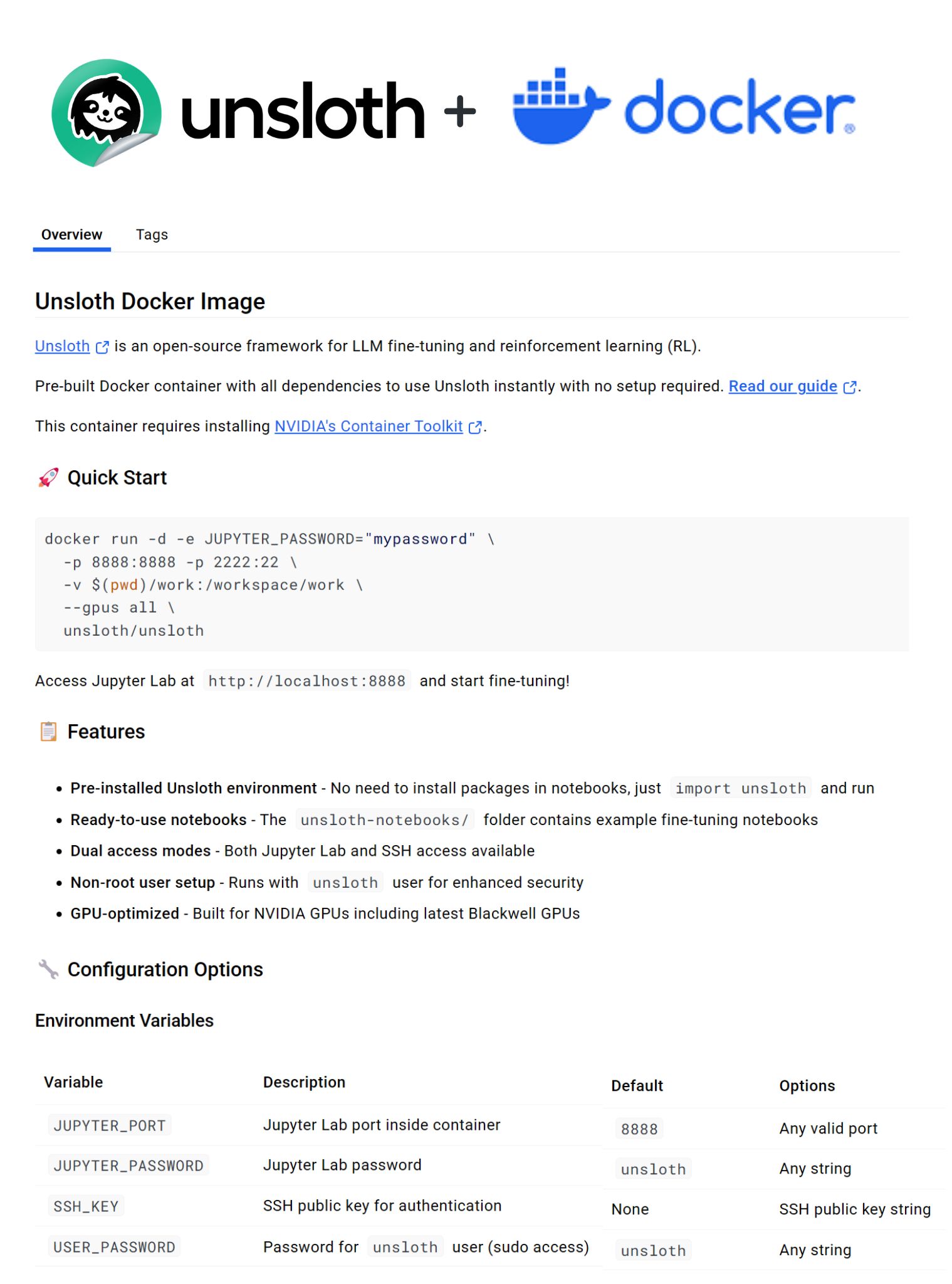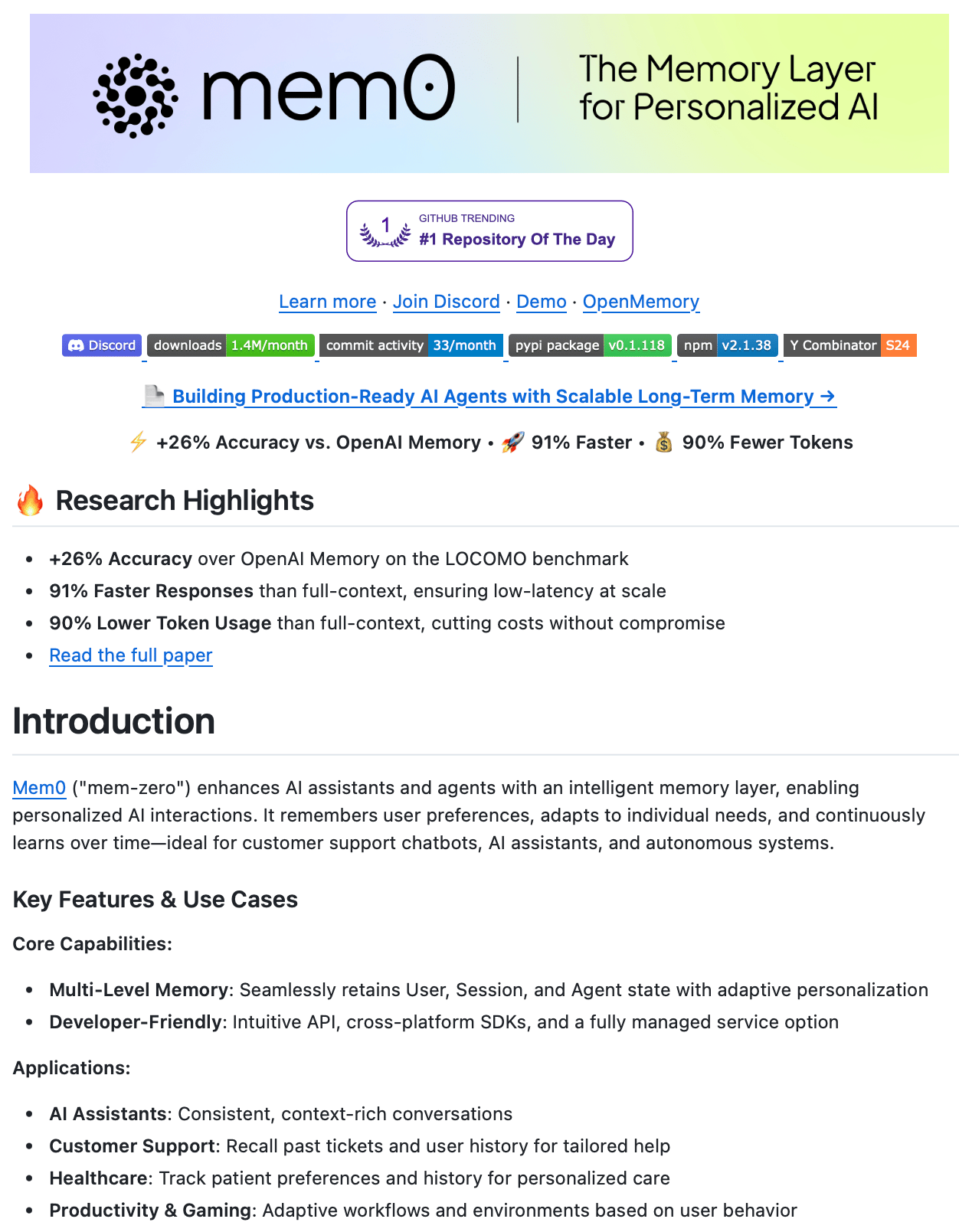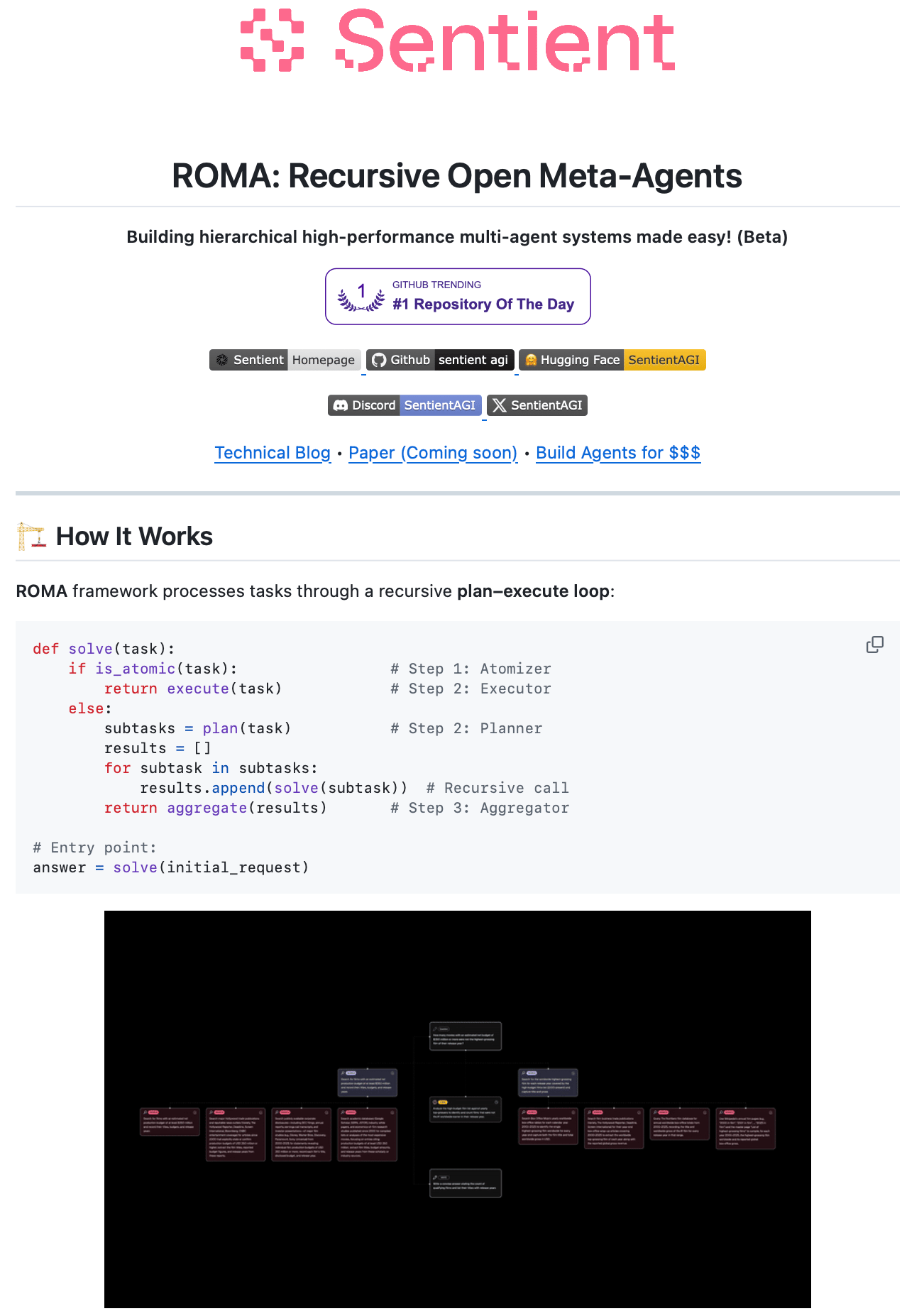- AI Engineering
- Posts
- Train LLMs locally with zero setup
Train LLMs locally with zero setup
.. PLUS: Open Source Meta-Agent Framework
In today’s newsletter:
Unsloth Docker Image: Train LLMs Locally with Zero Setup
Mem0: Build AI Agents with scalable long-term memory
ROMA: Open Source Meta-Agent Framework
Reading time: 3 minutes.
Unsloth AI, released a Docker image that lets you train LLMs locally with zero setup.
Local training is often complex due to dependency issues or broken environments.
With this Docker image, you can bypass those problems entirely. Just pull, run, and start training.
Key Features:
Pre-installed Unsloth environment - No need to install packages in notebooks, just
import unslothand runReady-to-use notebooks - The
unsloth-notebooks/folder contains example fine-tuning notebooksDual access modes - Both Jupyter Lab and SSH access available
Non-root user setup - Runs with
unslothuser for enhanced securityGPU-optimized - Built for NVIDIA GPUs including latest Blackwell GPUs
It’s 100% Open Source.
Mem0 is a fully open-source memory layer that gives AI agents persistent, contextual memory across sessions.
Without memory, agents reset after every interaction, losing context and continuity, which limits their usefulness in real-world applications.
Mem0 solves this by storing and managing long-term context efficiently, ensuring agents can learn and evolve with every conversation.
Here’s how it works:
Memory extraction – Uses LLMs to identify and store key facts from conversations while preserving full context
Memory filtering & decay – Prevents memory bloat by removing or aging irrelevant data over time
Hybrid storage – Combines vector search for semantic lookup with graph-based relationships for structured context
Smart retrieval – Prioritizes memories based on relevance, recency, and importance
Efficient context handling – Reduces token usage by sending only the most relevant memory snippets back to the model
It’s 100% Open Source.
Meta-agent framework for building high-performance multi-agent systems!
ROMA is an open-source meta-agent framework for building agents with hierarchical task execution.
It adopts a recursive hierarchical architecture where tasks are decomposed into subtasks, agents handle the subtasks, and results are aggregated upward.
The goal is to simplify the development of complex agent workflows by making task decomposition, coordination, and tracing more manageable.
Key components:
Atomizer: Determines whether a task is “atomic” (directly executable) or requires planning.
Planner: Breaks down non-atomic tasks into subtasks.
Executor: Executes atomic tasks using LLMs, APIs, or even other agents.
Aggregator: Collects results from subtasks and merges them into a parent output.
The recursion loop follows: solve(task) → decompose → solve(subtasks) → aggregate results.
That’s a Wrap
That’s all for today. Thank you for reading today’s edition. See you in the next issue with more AI Engineering insights.
PS: We curate this AI Engineering content for free, and your support means everything. If you find value in what you read, consider sharing it with a friend or two.
Your feedback is valuable: If there’s a topic you’re stuck on or curious about, reply to this email. We’re building this for you, and your feedback helps shape what we send.
WORK WITH US
Looking to promote your company, product, or service to 150K+ AI developers? Get in touch today by replying to this email.


